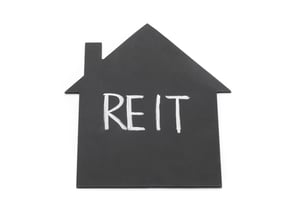Just like evaluating a property, one of the keys to understanding your market and your industry is knowing your numbers.
An understanding of real estate facts and statistics helps you to identify movement in local markets and better predict the right neighborhoods, properties, and features to invest in.
What follows are some of the statistics that you need to make better investment decisions. The good news? Low inventory, excessive student loan debt, and the ever-growing Millennial cohort create strong indicators for a strong and growing US rental market.
In addition, you’ll find out where some of the most promising local markets are concentrated as well as some of the facts you need to know to effectively evaluate property managers in those areas.
Real estate investing facts
- Home values in the United States have increased 50.7% since November 2016. (Zillow)
- There are over 50 million renter-occupied homes in the US, in contrast to 75 million owner-occupied homes. (Census Reporter)
- In 2007, around two-thirds of investors were primarily focused on the stock market. That number has fallen to 50%, with many Millennials choosing to invest in real estate instead. (RealWealth)
- Sales of vacation homes skyrocketed during the pandemic, with sales outpacing the growth of existing home sales by nearly 300%. (NAR)
- The average nightly rental rate in the US for short-term rentals is $202.50 per night, with 60% of stays seven days or longer. (Hotel Tech Report)
- The short term rental market was valued at $87 billion in revenue in 20196. It is expected to have a compound annual growth rate (CAGR) of 3.4% over the next 5 years. (Grandview Research)
- Zillow predicts home prices will increase by double-digits in 2022, driven by a perfect storm of pandemic factors, demographics, and demand vs. supply. (Fortune)
- More than 45 million millennials are hitting the prime first-time home buying ages this year, although they will have to compete with other homebuyers and real estate investors. (Yahoo)
- Between March and September 2021, virtually all of the nation’s 100 largest cities saw rapid and uninterrupted rent growth. (Apartment List)
- Individual real estate investors account for 72.5% of rental properties in the United States. (Pew Research Center)

Real estate pricing facts
- The US Median home price for November 2021 is $353,900, with nearly 6.5 million housing units sold over the past year. (National Association of Realtors)
- Construction of entry-level homes below 1,400 square feet has consistently declined as a percentage of new construction since 1980. By 2020, the percentage of smaller starter-home construction dropped to about 7% of total construction. (Home Buying Institute)
- Top 10 housing markets positioned for the highest price growth in 2022 include Providence, Salt Lake City, and Boise where home prices are predicted to grow by more than 7%. (Realtor.com)
- Industry experts mostly agree that 30-year interest rates on fixed-rate mortgages could reach the high 3% to low 4% range by the end of this year. (The Mortgage Reports)
Real estate buyer and seller facts
- Nearly two-thirds of millennials have homebuyer regrets, with high maintenance costs listed as the biggest home buying regret. (USA Today)
- Majority of Gen Z and millennials with kids in school now want homes with large yards, while Gen Zs without kids want to live in a detached home. (NAR)
- For Sale by Owner properties accounted for 7% of home sales in 2020. (NAR)
- The median days on market before an offer was accepted was 27.5 in 2021. (Redfin)
- Student loans represent $1.7 trillion in debt, negatively impacting the ability of younger, college-educated adults to buy homes. (Forbes)
- 17.6 million US homeowners spend more than half of their income on rent. (Habitat for Humanity)
Real estate rental facts
- Rental costs increased in 65% of US counties in Q1 2020, with 7 California counties listed among the top 10 counties where it is cheaper to rent, according to the most recent rent vs buy data from Realtor.com.
- The number of over-60 renters increased by 43% between 2007 and 2017 as retiring Baby Boomers chose to rent rather than buy when downsizing. (RENTCafé)
- The fastest single-family rent (SFR) growth in the US occurred in three Sun Belt cities – Miami, Phoenix, and Las Vegas – where annual rents increased by 21.4%, 19.2%, and 15.4% respectively. (Arbor).
- For the US overall, annualized rent growth on vacant-to-occupied SFRs surged by more than 17%, with suburban migration and a tight housing market creating upward pressure on rents. (Arbor)
- Florida witnessed the largest increases in single-family rents during the pandemic, with rents in Sarasota, Port St. Lucie, and Daytona Beach soaring by more than 50% on average between March 2020 and October 2021. (Housing Wire)
- More than 45% of renter households pay rent equal to 30% or more of their gross household income. (Pew Research Center)
- About one-third of the rental units in the US are single-family homes, with the number of SFRs rising by 18% between 2008 and 2018. (Joint Center for Housing Studies of Harvard University)
- Investment capital is pivoting from multifamily into single-family build-to-rent communities to create housing for people who are renters by choice. (GlobeSt.com)
- Over 44 million housing units in the US are renter-occupied, with 41% of renters living in single-family homes. (Rent.com)
Real estate market facts
- According to a study by U.S. News & World Report, the best places to live for families are Huntsville, Ann Arbor, and Fayetteville based on key metrics including affordability, quality of life, and the job market.
- WalletHub ranks Chesapeake VA, Gilbert AZ, and Lincoln NE as the best places for first-time home buyers out of 300 cities of varying sizes.
- Versatile homes are preferred post-pandemic, with more space, quiet locations, and 3-bed and 2.5 bath floor plans making the list of key amenities and features. (Realtor.com)
- “Hidden gem” housing markets poised for major growth in 2022 include Salt Lake City, Boise, Spokane, and Indianapolis with combined sales and price growth rates of more than 20%. (MarketWatch)
- The average real estate market life cycle -- involving a pendulum swing from a seller market to a buyer market and back again -- is around 16 years. (Harvard)
- The two hottest housing markets in the country, based on market demand and the number of days a listing remains active, are Burlington NC and Manchester-Nashua NH. (Realtor.com)
- Austin, Dallas-Fort Worth, and Des Moines were the 3 most popular markets for millennials during the pandemic. (NAR)
- Lawton, Oklahoma is ranked as the cheapest city for renters in 2021 by Apartmentguide.
Property management facts
- In 2020, US property management accounted for about $88.4 billion in revenue in North America, an increase of nearly 8% over the past 12 months. (iPropertyManagement)
- Most common property management services are maintenance and repairs, rent and fee collection, leasing and advertising, property inspections, and evictions. (iPropertyManagement)
- According to a study from Harvard University, spending on remodeling is expected to reach $400 billion by Q3 2022, with annual improvement and repair spending growing by 9% year-over-year. (JCHS Harvard)
- The US market for smart home products grew by 9.5% in the 3rd quarter of 2021, with devices such as home monitoring and security, smart speakers, lighting and smart thermostats seeing some of the greatest demand. (IDC)
- Smart technology, pet accommodations, privacy, and accessibility are 4 amenities that drive rentals and ROI. (Rentals.com)
- According to HomeUnion, 9 must haves for a successful single-family rental property are:
- Good location
- New smell and feel
- Parking
- Central air conditioning
- Laundry
- Storage space
- Outside space
- Safety
- Pet friendly
Study the market, demographics, and trends in order to know where to buy, when to exit, and how to optimize the value of your investment properties. And remember, with the right property management, you can take advantage of robust rental markets anywhere in the country.









